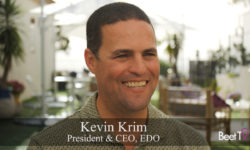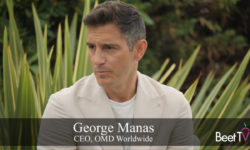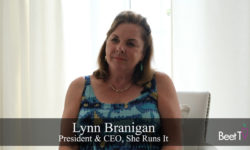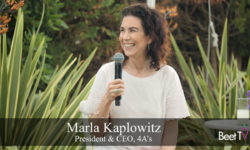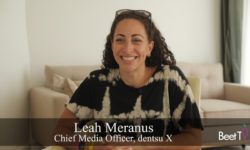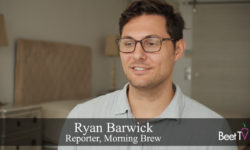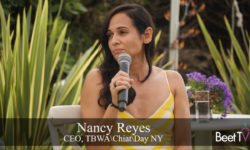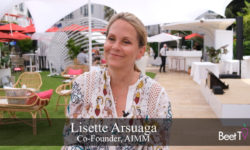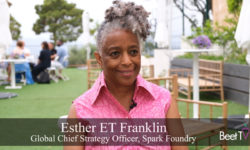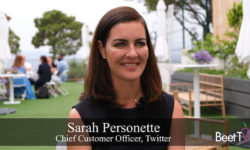CANNES – Consumers are bombarded throughout the day with dozens of advertising messages, making their creative content an important part of standing out in the crowd. With dynamic creative opitimization (DCO), the creative elements of an ad – including its imagery, text and layout – can be put together in real time and customized to be more effective with target audiences.
“What dynamic creative is is the ability to have creative be responsive to the audience on the fly,” John Nardone, president of omnichannel advertising platform Mediaocean, said in this interview with correspondent Tameka Kee at the Beet Villa during the Cannes Lions International Festival of Creativity. “That’s really important, because relevance equates to attention and we’re in a world that has fundamentally changed from the history of how advertising worked.”
Since the advent of the smartphone era, people have more ways to spend time with media content. Because many consumers divide their attention among multiple screens — including televisions, tablets, laptops and smart displays – advertisers are looking for other indications that their ad messages are being seen heard.
“When we’re distracted in line at the grocery store or multitasking, a lot of the ads that go before our eyes are never seen by our brains,” Nardone said, “but personalization and the dynamic creative that allows it, cuts through those mental filters by creating a moment of relevance.”
Finding ‘Message Audiences’
The effectiveness of dynamic creative can be measured in several ways, including conversion metrics that indicate a consumer responded by buying the advertised product or service. Consumer packaged goods (CPG) brands that are more removed from the point of sale in stores have other kinds of research tools to measure campaigns.
“The response to actual sale is dramatically increased by the dynamic campaigns, and when I say dramatically, I’m not talking 10% or 15%,” Nardone said. “One is a 50% lift, one is an 80% lift, one was 150% lift, one was a 700% lift in effectiveness versus non-dynamic campaigns.”
The return on ad spending can be considerable for major brand marketers plow millions of dollars into campaigns. Personalizing these campaigns typically includes a process of determining what kinds of creative is most important to different audience segments. Instead of creating a broad message aimed at all women ages 25 to 34, an advertiser and its creative agency can customize ads for sub-segments, such as mothers with young children or working mothers.
“The creative agency now needs to understand what we call ‘message audiences,’” Nardone said. “Because the way that I express the value proposition of my product and how I relate to that person as a human being, can be very different based on even the day of week or the time of day.”
You are watching “The Mediaocean Retreat,” a Beet.TV Leadership Summit at Cannes Lions 2022.
For more videos from this series, please visit this page.
Beet.TV is an official partner of Cannes Lions.







